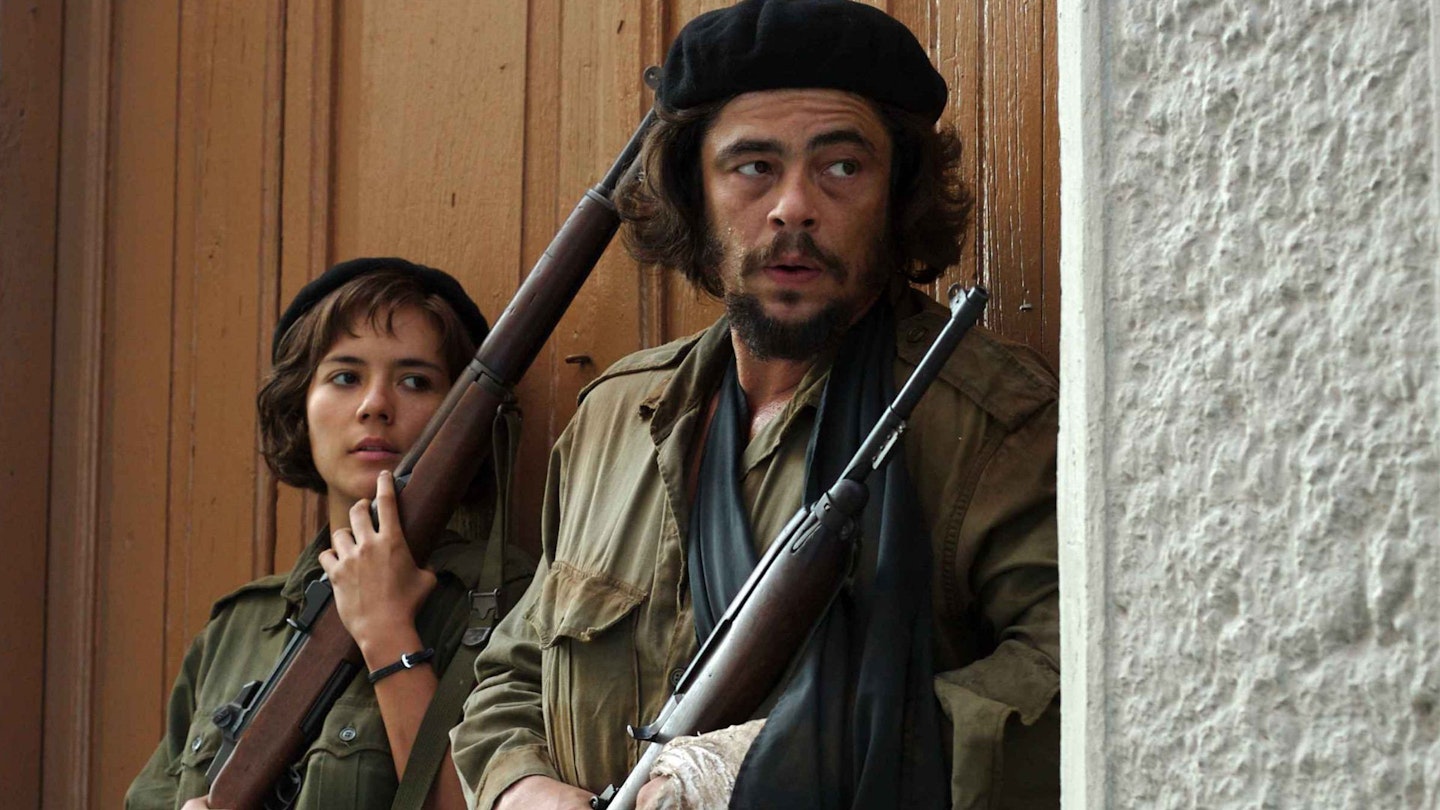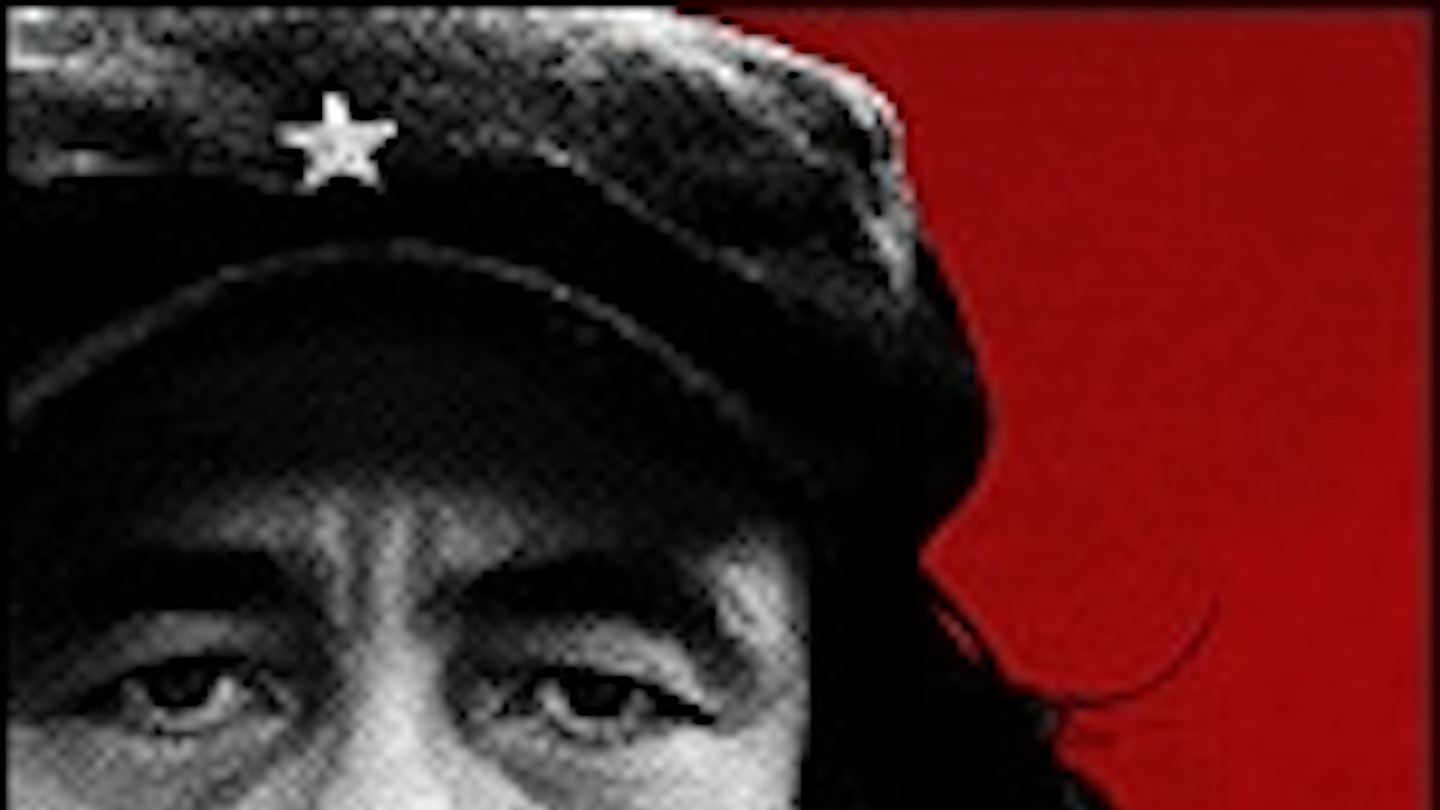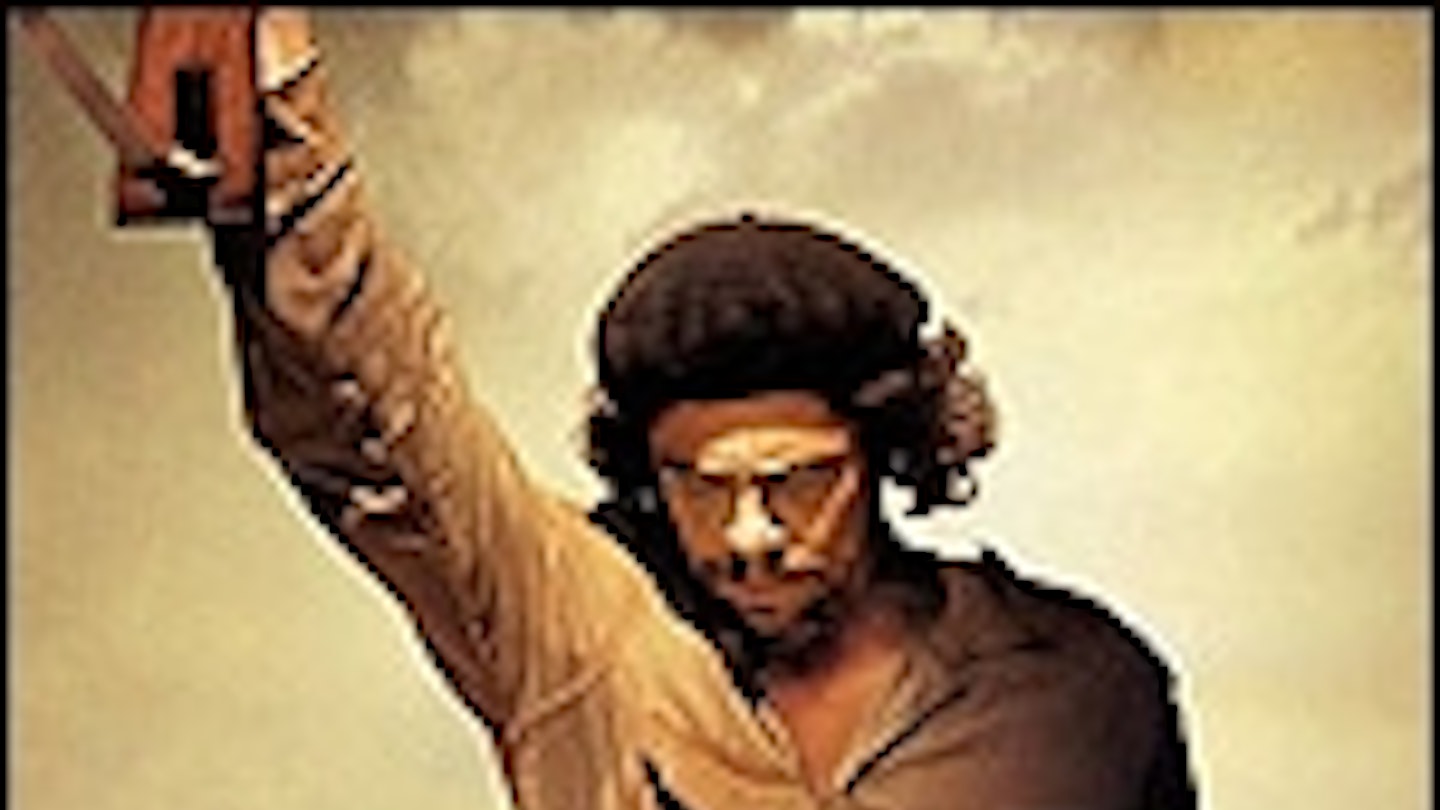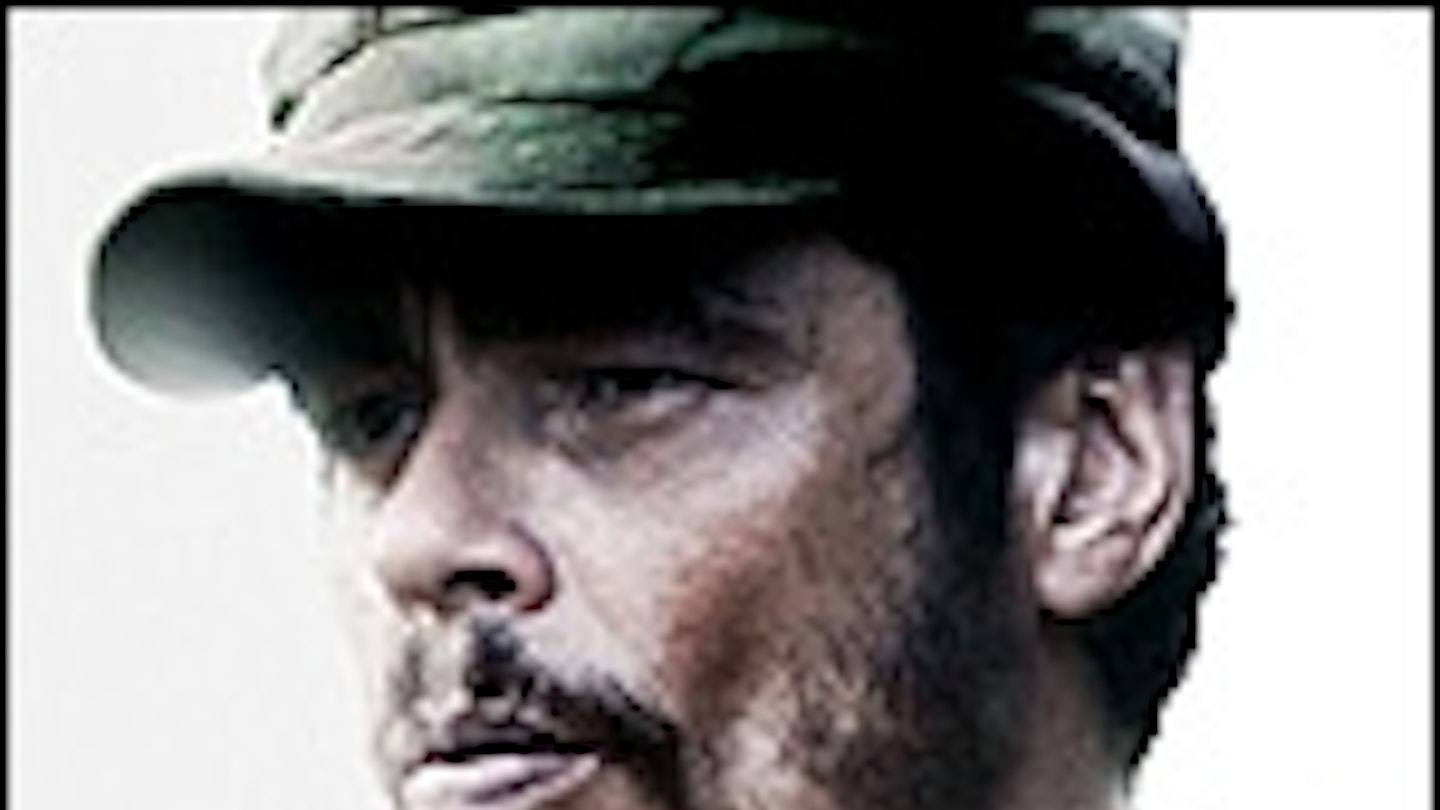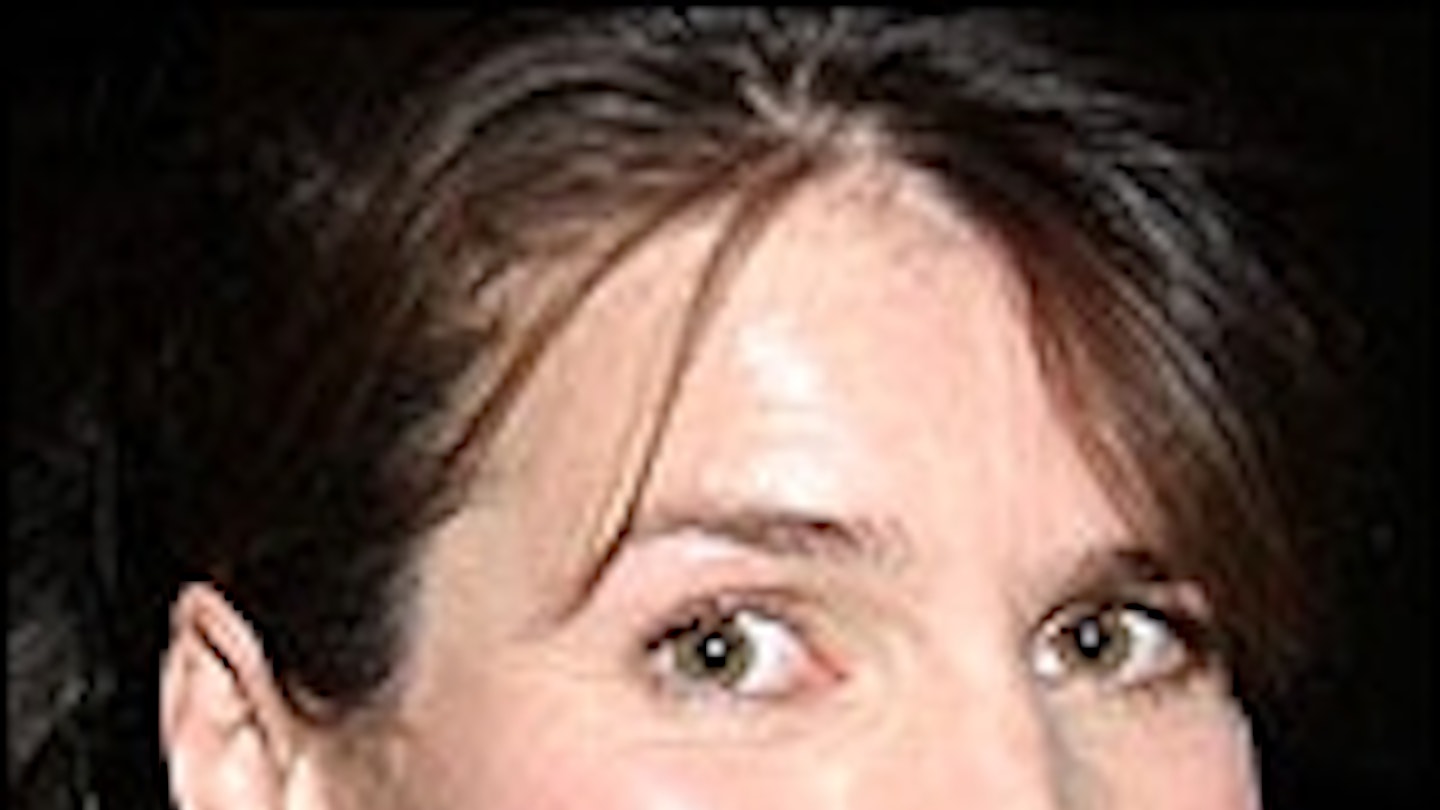When Cuban farmers emerged from the mists of the Sierra Maestra mountains to join Che Guevara in his battle against Batista’s military government in 1956, few knew what the man looked like, let alone what drove him. They came, it’s said, out of a deep-set belief that this man would lead them to a better place.
Twenty minutes into Part One of Steven Soderbergh’s four-hour-plus Guevara epic, after we’ve endured a whistle-stop ‘News
On The March’ history lesson, and observed a mumbled scene in Mexico City in 1955 where Fidel Castro (Demián Bichir) outlines his plans to Ernesto ‘Che’ Guevara (Benicio Del Toro), it becomes clear that Soderbergh is adopting a similar approach. Watching Del Toro’s blank, unemotional Che crossing the Gulf Of Mexico on a rickety boat, bound for Cuba, we remain in the dark, sticking with the film out of our own belief that this man Soderbergh will lead us to a better place.
Despite the promise implied by a plot in which a charismatic maverick rounds up a bunch of crazy associates to overthrow Mister Big, this is no ‘Ernesto’s Eleven’. In fact, Part One is closer to the game-playing of The Limey and Solaris — dream-like reworkings of Hollywood genres with added existential dread.
Although he’s never off the screen, Del Toro’s performance is as beautifully enigmatic as that Alberto Korda photo reproduced on T-shirts around the world. Eschewing the clear biography of Walter Salles’ The Motorcycle Diaries, Part One simply drops us into the confusion and drudge of conflict. Small pieces of information emerge — he’s near-crippled by asthma; he uses his medical training to treat Cuban peasants; we cadge fragments of his philosophy (“The punishment for treason is death”) — yet it’s only ever what the soldiers know. In addition, Del Toro’s Che is delivered as a performance within a performance; like the soldiers, we’re watching doctor and family man Ernesto playing at (and slowly becoming) Che Guevara, the cold, efficient leader of men.
The New York sequences (shot in rich Life magazine black-and-white), in which Guevara is interviewed by ABC correspondent Lisa Howard (Julia Ormond) and addresses the United Nations, are less successful. By showing Guevara’s life as flashbacks within a TV interview, Soderbergh gives us Che the unreliable narrator — do we believe him? — but the overall effect is a bit like nipping out of the cinema exit to attend, well, a meeting of the United Nations.
However, all is forgotten during the film’s final set-piece, the battle for Santa Clara. Shot amid the dirty pastels of the deserted Cuban province, here’s a stunning amalgam of Gunfight At The O. K. Corral, The Battle Of Algiers and the second half of Kubrick’s Full Metal Jacket that also throws in an astonishing train crash straight out of Lawrence Of Arabia. It’s both an object lesson in the strategic genius of Guevara’s men, and one of the great battle sequences of modern cinema.
